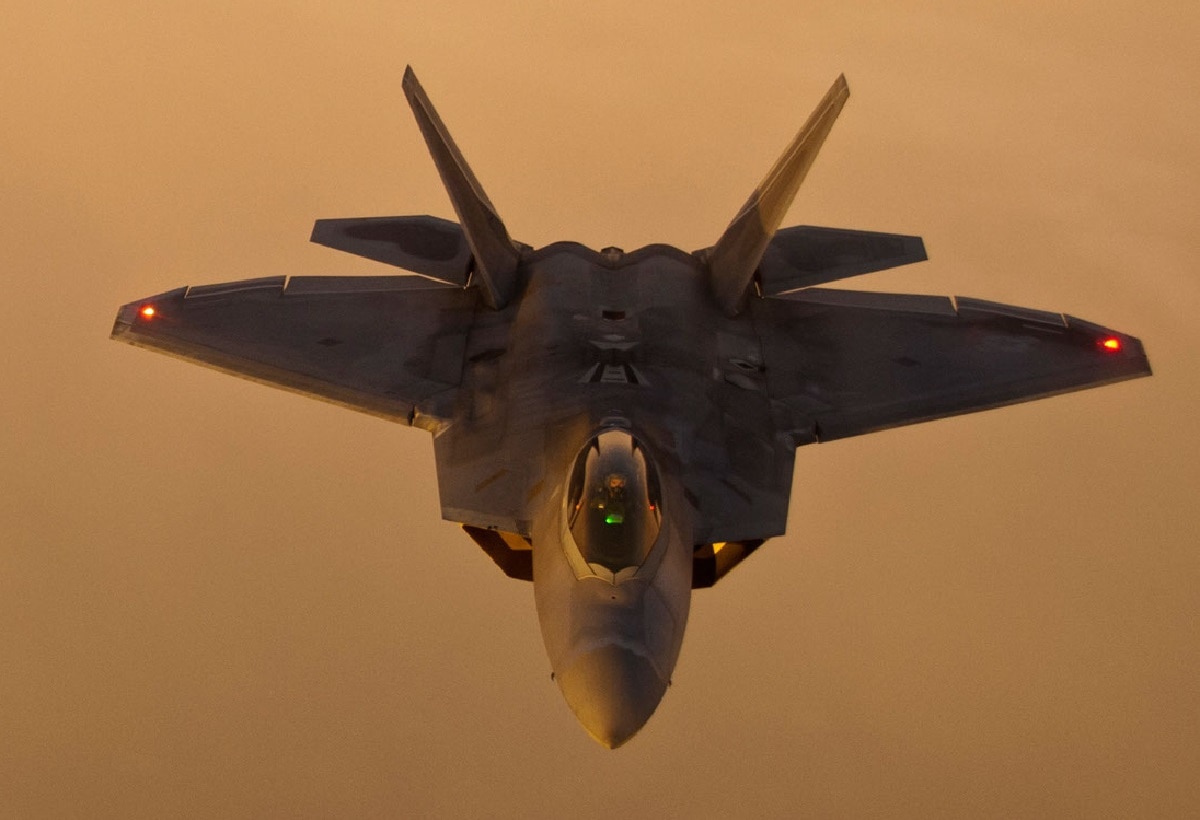In preparation for a potential future conflict with China in the Indo-Pacific, the U.S. Air Force used the F-22 Raptor stealth fighter jet to test one of the most important concepts for near-peer warfare.
F-22 Raptors “ACEing” it
In June, F-22 Raptor fighter jets stationed in Hawaii deployed to Japan in order to conduct Agile Combat Employment (ACE) drills with F-15C/D Eagles fourth-generation fighter jets and F-35A Lightning II stealth fighter jets.
“This is the first time the 354th AEW has conducted a dynamic force employment with multiple airframes from multiple home stations. We are excited to bring the Hawaiian Raptors into our AEW and refine our high-end warfighting capabilities in a forward-deployed ACE setting,” U.S. Air Force Colonel David Berkland, the commanding officer of the 354th Air Expeditionary Wing, said in a press release.
The ACE concept seeks to create and hone the distributed and expeditionary warfare capabilities of Air Force squadrons. In a war with China—which has potent long-range fires capabilities—a lot will hinge on the U.S. military’s ability to spread out its air forces throughout the Indo-Pacific area of operations to make it harder for the Chinese military to take them out with ballistic or cruise missiles.
“Moving our forces fluidly across the theater and operating with our Air Force and Marine Corps partners keeps us agile and ready for any potential tasking. This movement provides realistic and relevant training that increases our Airmen’s ability to remain strategically predictable, but operationally unpredictable in an ever evolving competitive and contested environment,” Lieutenant Colonel Kevin Horton, from the Hawaii Air National Guard and the commanding officer of the 199th Expeditionary Fighter Squadron, stated.
The F-22 Raptor
The first fifth-generation stealth fighter jet in the world, the F-22 Raptor is an air dominance, multi-role fighter that combines stealth, speed, and agility. Meanwhile, the F-22 Raptor’s sensors and air-to-air capabilities make it a formidable opponent.
What makes the F-22 Raptor a great fighter jet for dogfighting is its thrust vectoring capabilities. Using special nozzles at the end of its two Pratt & Whitney F119-PW-100 turbofan engines, the F-22 Raptor can vector thrust in a different direction from the one it is flying, and thus quickly reposition.
When it comes to armament—the F-22 Raptor, after all, is an air superiority fighter jet—the stealth aircraft can carry two AIM-9 Sidewinder heat-seeking air-to-air missiles and six AIM-120 AMRAAM radar-guided air-to-air missiles.
In an air-to-ground configuration, the Raptor can carry two 1,000lb GBU-32 JDAMs, AIM-9 Sidewinders, and two AIM-120 AMRAAMs or eight 250lb SDB bombs, two AIM-9 Sidewinders, and two AIM-120 AMRAAMs. Further, it has a potent M61A2 20-millimeter cannon with 480 rounds for close engagements.
The F-22 Raptor has an operational ceiling of 50,000 feet and an operational range of almost 1,900 miles (but with two external fuel tanks that would negate most of the aircraft’s stealth capabilities) and can reach speeds of more than 2 Mach and supercruise, or sustain supersonic flight without powering its afterburners.
Although it planned to purchase hundreds of aircraft, the Air Force ended up buying only 186 F-22s and then closed the production line; however, the Air Force plants to fly the aircraft at least until 2040.
1945’s New Defense and National Security Columnist, Stavros Atlamazoglou is a seasoned defense journalist specializing in special operations, a Hellenic Army veteran (national service with the 575th Marine Battalion and Army HQ), and a Johns Hopkins University graduate. His work has been featured in Business Insider, Sandboxx, and SOFREP.

